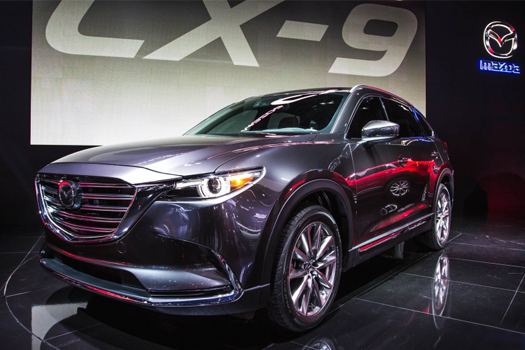

Mazda has introduced the all new CX-9 but there is a bad news for the diesel lovers that there will not be a diesel engine offered on the line-up. The all-new 2016 Mazda CX-9 will probably be provided solely with a petrol drivetrain, however Japanese manufacturer’s regional arm isn’t concerned. The brand new engine runs a high 10.5:1 compression ratio. It also involves a twin-valve Dynamic turbo that produces extra power promptly and a cooled exhaust fuel recirculation system lowers engine temperatures without having to add extra fuel.
The fuel economic system on all new Mazda CX-9 as a class-leading alternative for buyers looking a massive, seven-seater, petrol SUV. The all-new SKYACTIV-G 2.5T supercharged engine is an outstanding piece of Mazda engine innovation with world-first technological advancement that stops turbo lag. The result of this, in part, is in the low fuel consumptions and higher efficiencies.
The CX-9 has unceasingly been very enormously regarded and experts suppose that much more SUV buyers will need to acquaint themselves with this SUV when they see the brand-new model in the metal. There’s quite a bit to like on this vehicle. The Mazda CX-9 2.5-litre petrol engine is, so far fuel economical as claimed, a lot more effective than its rivals.
The front-wheel-power models of the CX-9 use a claimed 8.4 litres per one hundred kilometres, even as the all-wheel-drive models use around 9L/100km, in line with Mazda. And economy figures are based on commonly used unleaded petrol which is easily available across the globe.
The CX-9 has a standing ahead of models like the petrol Hyundai Santa Fe 2.4-litre petrol engine that sips 9.4L/100km, the Kia Sorento 3.3-litre V6 petrol uses 9.9L/100km and the huge-promoting Toyota Kluger 3.5-litre V6 petrol is even thirstier and gulps 10.2L/100km. But not like those three makers, Mazda won’t offer a diesel model. That you could get a Santa Fe diesel (which makes use of between 6.3 and 7.7L/100km), a Sorento diesel with 7.8L/100km and there’s also the Toyota Fortuner, which makes use of around 8 and 8.6L/100km.
Mazda said the lay of the land for the likes of the Toyota Kluger means a large SUV based on petrol only because the CX-9 would possibly not discourage buyers so much at the moment as it might have when petrol was bit costly. Experts have noticed that the fuel cost come down, petrol consumption isn’t really on the high of mind because it used to be a few years ago. Its price of the fuel that always matters. One of the experts said that he is 100 percent sure that there will be a small portion of the market as a way to say no diesel, no sale. But Kluger, for instance, is doing 12,000 or 13,000 (units per year) without offering any diesel engine option for its buyers. So it proves you can fulfil a huge percentage of the marketplace. They have now an extraordinarily clear fuel consumption potential, even if it’s only on paper, but a seven seater like CX-9 is much worth than any other option available.